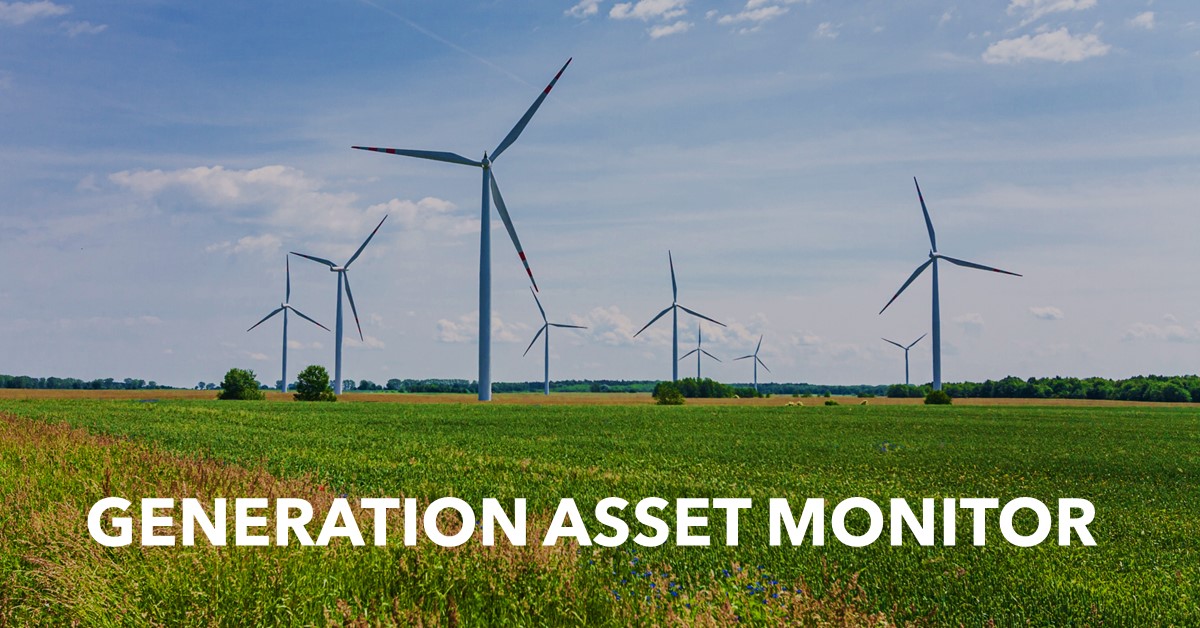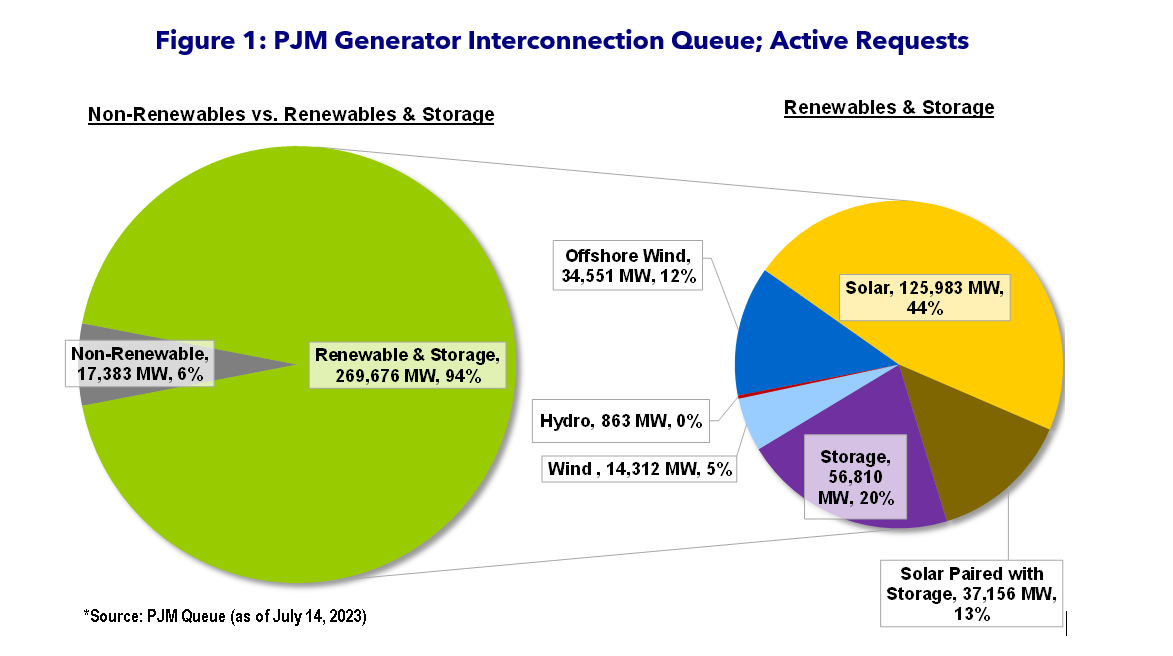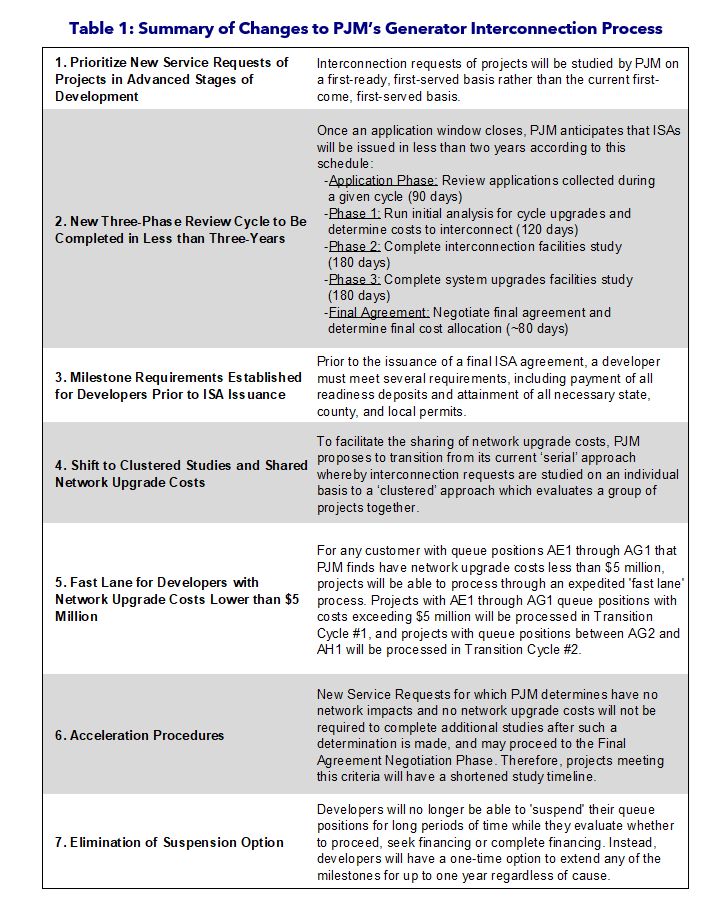PJM Interconnection Process Update | Generation Asset Monitor Blog
Earlier this month, PJM issued an update on its new process for studying New Service Requests from generators seeking Interconnection Service Agreements (ISAs) or Wholesale Market Participant Agreements (WMPAs).[1],[2]
This new process was approved by the Federal Energy Regulatory Commission (FERC) on November 29, 2022, and was implemented to address the significant backlog of generation projects with queue positions awaiting ISAs or WMPAs. This backlog has been compounded in recent years due to a surge in renewable projects seeking ISAs. In fact, renewable projects currently comprise 94% of generation projects awaiting ISAs compared to 38% in 2017.
[1] FERC dockets ER22-2110-000 and ER22-2110-001
[2] Note that ISAs are executed with front-of-the meter resources, and WMPAs are executed with distributed resources. Since PJM’s distributed generation interconnection requests are on local distribution systems, they are removed from FERC jurisdiction. However, distributed resources can apply to take part in the wholesale transactions of energy and capacity in PJM through the execution of a WMPA.
Several changes to the interconnection process are currently being implemented, including New Service Requests being processed under a “first-ready, first-served” approach rather than its previous “first-come, first-served” method and developers being required to submit readiness deposits at various decision points throughout the process. These changes, along with additional revisions to the process (shown in Table 1) are intended to discourage speculative projects from entering the queue since they have significantly exacerbated the backlog of projects awaiting ISAs in recent years.
PJM’s July update indicated that beginning on July 10, a 60-day window opened for when certain developers must post readiness deposits of $4,000/MW and demonstrate site control evidence. This applies to projects with queue positions between AE1 and AG1 without existing ISAs or WMPAs. Developers that meet these requirements will either be studied through a “fast lane” (see Figure 1) for expedited processing or Transition Cycle #1 (TC1). Going forward, PJM will maintain a webpage with updated information on the status of processing queue requests.
PJM’s July 6 update also acknowledged that challenges faced by developers pertaining to siting, financing and supply chain issues are also contributing to delays in project online dates. ESAI discussed this issue extensively in past issues of Renewables WatchTM. PJM noted that approximately 44,000 MW of projects have completed the PJM study process but have yet to advance due to these other challenges.
The ISO anticipates issuing agreements to projects totaling 100,000 MW by the end of 2025, and an additional 100,000 MW by the end of 2026.
Generation Asset Monitor
Generation Asset MonitorTM provides an outlook for the development timeline of new generation projects and plant retirements in ISO-NE, NYISO, PJM & MISO. For each project, ESAI assigns a “probability of completion factor in percentage terms” that is then applied to develop a forward assessment of likely capacity additions and retirements in each pool. The Generation Asset MonitorTM is available as part of ESAI’s Quarterly Power and Whole View Services. MISO Capacity customers can request access to our MISO Generation Asset Monitor, for access to our predictions for Renewable Energy Asset additions, Fossil additions, and projects at risk of retirement in MISO.
Learn About Capacity Watch
Capacity WatchTM – Provides quarterly analysis of capacity markets and policy issues that impact capacity price outcomes over a 10-year forecast horizon. Also provided is an evaluation of the outlook for the construction of each generation project in PJM, New York, and New England. Every project is assigned a “probability of completion” factor in percentage terms which is then applied to develop a forward assessment of likely capacity additions within a particular pool. The impacts of new generation and retirements on reserve margin surpluses and forward capacity market values is updated and presented in each issue. ESAI’s project database (Generation Asset MonitorTM) is updated and presented with each issue.






